- News
- Reviews
- Bikes
- Components
- Bar tape & grips
- Bottom brackets
- Brake & gear cables
- Brake & STI levers
- Brake pads & spares
- Brakes
- Cassettes & freewheels
- Chains
- Chainsets & chainrings
- Derailleurs - front
- Derailleurs - rear
- Forks
- Gear levers & shifters
- Groupsets
- Handlebars & extensions
- Headsets
- Hubs
- Inner tubes
- Pedals
- Quick releases & skewers
- Saddles
- Seatposts
- Stems
- Wheels
- Tyres
- Tubeless valves
- Accessories
- Accessories - misc
- Computer mounts
- Bags
- Bar ends
- Bike bags & cases
- Bottle cages
- Bottles
- Cameras
- Car racks
- Child seats
- Computers
- Glasses
- GPS units
- Helmets
- Lights - front
- Lights - rear
- Lights - sets
- Locks
- Mirrors
- Mudguards
- Racks
- Pumps & CO2 inflators
- Puncture kits
- Reflectives
- Smart watches
- Stands and racks
- Trailers
- Clothing
- Health, fitness and nutrition
- Tools and workshop
- Miscellaneous
- Buyers Guides
- Features
- Forum
- Recommends
- Podcast
news
Out of the ordinary STOLEN BIKE ALERT! Penny-farthing pinched from London cyclist; UAE Team Emirates rider goes off course during Dauphiné time trial; "We need physical barriers between motorists & cyclists" + more on the live blog
SUMMARY
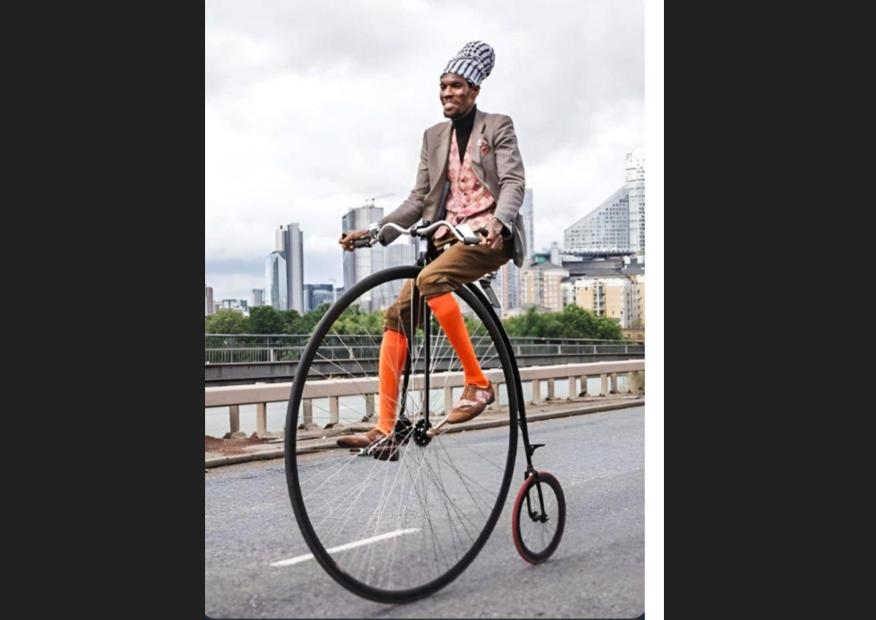 Stolen penny-farthing
Stolen penny-farthing05 June 2024, 14:10
Out of the ordinary STOLEN BIKE ALERT!
Here's a blast from the past for some of you readers who've been around for a while, the return of STOLEN BIKE ALERT! It's being brought out of the cupboard, slightly dusty, for this bike theft with a difference...
Fellow penny-farthing lover Jeremy Vine shared the appeal saying: "Important we get this back. Red rear tyre will make it difficult to fence."
Yep, I'm sure it'll be that red rear tyre that's making it hard to shift...
Just to help narrow it down! Let's find Robert's Penny! pic.twitter.com/C9Tf9NxEaU
— Matt Shaw (@_MattShaw) June 4, 2024
05 June 2024, 16:37
A lifetime of cycling can lead to less knee pain, new study finds
05 June 2024, 16:03
Are drones the future of close pass operations? Police in Canada to use drones as part of attempt to clamp down on dangerous driving around cyclists
05 June 2024, 16:01
The leaked Tour de France road bikes — new bikes from Trek, Pinarello, Canyon, Dare & Wilier
05 June 2024, 15:34
Remco Evenepoel wins Critérium du Dauphiné time trial, takes control of GC contest
In the end nobody could trouble Remco Evenepoel once he'd bested Josh Tarling's early benchmark, the Belgian taking a dominant win and claiming the race lead from Derek Gee, who put in a respectable ride but ultimately fell short of defending the jersey.
A great day for our team concludes with @EvenepoelRemco in the #Dauphine yellow jersey 🙌
Photo: @GettySport pic.twitter.com/9VjCm8TGPg
— Soudal Quick-Step Pro Cycling Team (@soudalquickstep) June 5, 2024
Primož Roglič rallied to take third on the day but sits 33 seconds behind Evenepoel on GC. It was a grim day for the rest, Juan Ayuso, Tao Geoghegan Hart, Aleksandr Vlasov, Jack Haig and Jai Hindley all shipping time to the stage winner. It puts the Belgian press on notice for a pre-Tour frenzy should their man hold out through the second half of the week as the race passes into the mountains. The others will be hoping the disrupted preparation catches up with Remco, but so far it's all looking very positive for the Soudal Quick-Step man...
05 June 2024, 14:25
Remco removes Tarling from the hot seat
That could well be the stage. Part of me wonders if poor Josh Tarling is just relieved to be free from his hot seat incarceration... almost certainly not considering that would have been a massive win for the Ineos Grenadiers youngster. He'd probably have sat there until midnight if required.
Wow, @EvenepoelRemco 👏#Dauphine pic.twitter.com/2km3RDAhGI
— Soudal Quick-Step Pro Cycling Team (@soudalquickstep) June 5, 2024
Evenepoel was one second down on the Brit at the second checkpoint but timed his effort perfectly, finishing 17 seconds clear after some monstrous closing kilometres. Looking at those left to finish, and their first time check efforts, Juan Ayuso may be the only person who can spoil the Belgian's day. We hyped him up but Primož Roglič was 26 seconds down on Remco at that aforementioned checkpoint. It looks like Patrick Lefevere's going to be a happy man this evening...
05 June 2024, 14:04
"This climb wasn't on today's menu": UAE Team Emirates rider Nils Politt goes off course during Dauphiné time trial
'Tight bend coming up, keep an eye on the exit of the corner, hold that speed through the turnnnnnn... bleep...'
⏱Cette montée n'était pas au programme du jour 🇩🇪 @PolittNils
⏱This climb wasn't on today's menu 🇩🇪 @PolittNils#Dauphine l @TISSOT pic.twitter.com/Uu4s9qzeqW
— Critérium du Dauphiné (@dauphine) June 5, 2024
"This climb wasn't on today's menu..." the official Critérium du Dauphiné account joked, the big German Nils Politt not looking too bothered by his U-turn detour. He certainly took it better than at last year's Tour when he snapped his chain before performing a roadside bike fit amid neutral service blundering. Third time lucky...
By the time Politt crossed the line he had set the fourth fastest time, more than two minutes down on that set by a rampaging Josh Tarling at the start of the day. The GC favourites are preparing their efforts so it remains to be seen where Politt and Tarling end up, Remco Evenepoel setting the fastest time at the first checkpoint and Primož Roglič still warming up at the Bora-Hansgrohe bus. It could be an interesting next hour or so. Whatever you do, don't copy Nils...
05 June 2024, 12:37
Does a very long wait in the hot seat await Josh Tarling?
The Critérium du Dauphiné time trial is underway, Ineos Grenadiers rider Josh Tarling the first to cross the line in Neulise. He wasn't the first to start however, the Welsh powerhouse passing three riders on his way to the fastest time so far. He'll now head to the hot seat where a quite lengthy wait will presumably commence, potentially all the way until about quarter to four when the final challenger will finish.
⏱ 🇬🇧@Joshytarling donne le ton sur ce contre-la-montre avec le meilleur temps sur la ligne d'arrivée !
⏱ 🇬🇧@Joshytarling sets the fastest time!#Dauphine l @TISSOT pic.twitter.com/1Nhu23CK2a
— Critérium du Dauphiné (@dauphine) June 5, 2024
The noises out of the Tarling camp were that he won't be at 100% today, having taken some time off after Paris-Roubaix, however he's two and a half minutes quicker than anybody else so far. Around an hour until Remco Evenepoel rolls down the start ramp, and then Primož Roglič will get underway at 15:11. Can anybody beat Tarling?
05 June 2024, 11:22
Police release video of violent attack on cyclist near Box Hill which left victim seriously injured with punctured lung when masked thugs on motorbike kicked him off popular cycle path
05 June 2024, 11:10
Astana Qazaqstan budget will be one of three biggest in pro peloton if deal with Chinese partner agreed
L'Equipe has this morning reported that Astana Qazaqstan may be getting some new backing, a Chinese partner apparently interested in almost doubling the team's budget. The French newspaper describes the potential deal as "XXL" and says a Chinese businessman is prepared to buy the team from the Kazakhs in 2025 in a five-year agreement.
The Astana name has been in the peloton since 2006, the team the first to be financed by government funds, a move that has since been repeated by Bahrain, UAE and Israel. L'Equipe says, if the deal comes together, the team would enjoy a significantly increased budget, placing them within the top three best backed outfits in the peloton.
05 June 2024, 10:43
A Tale of Two (Cycling) Cities
8.30am in London yesterday morning, as filmed by Rory McCarron a cycling lawyer at Leigh Day:
London 08:30am pic.twitter.com/udbQJL3fPD
— Rory McCarron (@CyclingLawLDN) June 4, 2024
8.45am in Paris this morning, as filmed by Brice Perrin:
Paris, rue La Fayette, ce matin à 8h45.
Sorti de l'usage anecdotique et militant, le vélo est devenu un mode de déplacement massif pour les trajets quotidiens.
Dans la capitale française, sa part modale est déjà presque trois fois supérieure à celle de l'automobile (11% VS 4%). pic.twitter.com/0uxHzEzTzr— Brice Perrin (@briceperrin) June 5, 2024
Down(tube) and out in Paris and London didn't make the cut for the headline, but seemed too tortured not to give a mention before I move on...
05 June 2024, 10:15
Dame Sarah Storey (and many others from across the cycling community) wish Kate Richardson speedy recovery after hit-and-run rules pro rider out of Tour of Britain
Utterly dreadful news, hoping Kate makes a speedy recovery & after the physical injuries have healed she can manage the psychological impact. https://t.co/iuebEDsagn
— Dame Sarah Storey (@DameSarahStorey) June 5, 2024
Journalist and presenter at Sky Sports Sanny Rudravajhala also commented on the story...
We’re about to have an elite women’s road race in Britain and such is the current state of play, we’ve got a 4x4 driver nearly killing one of our British riders.
This is absolutely unhinged. @roadcc article link below. ⬇️ https://t.co/bNKIn2bjlO pic.twitter.com/nvEAwD31nA
— Sanny Rudravajhala (@Sanny_Rudra) June 4, 2024
There has been plenty of discussion given the high-profile nature of the incident,
Tim Egan suggesting that "road violence and violence against people on bikes is normal in England". I'm sure some of you in Scotland, Wales and Northern Ireland would edit that to the whole of the United Kingdom.
"My son races at under 16 level but does most of training on turbo trainer and in car free space, I now commute on canal, my wife rides on pavement and canal. Is totally lawless with no justice for victims," he added.
Mark: "Depressing how outside of the cycling press this has also received zero coverage."
Ross McGibbon: "Always use a camera. Let's get the dangerous drivers caught for everyone's benefit."
Bev G-o: "Having been knocked hit by a car [driver] overtaking me and it then having a head-on collision with the car coming towards it, it terrifies me the number of drivers that make serious errors of judgement regarding overtaking cyclists.
"Cameras front and back are the way to get these people prosecuted for their reckless and dangerous driving. If it wasn't for my camera, two drivers would have got away with this. Instead, they were both prosecuted for driving without due care and attention. No, my camera didn't stop me being hit but it helped get justice and charges brought against those involved.
"I hope she's okay, recovers quickly and this experience doesn't stop her from doing the sport she loves."
05 June 2024, 09:21
"We need physical barriers between motorists and cyclists": Parent highlights cycling safety issues families face just trying to get from A to B by bike
"It doesn't matter how well trained he is or how well he cycles. Paint isn't infrastructure and it won't help him. We need physical barriers between motor traffic and cyclists. And no... clearly the pavement isn't an option here or anywhere else."
Those are the words of a road.cc reader who goes by the username AZB on Twitter/X and has highlighted the issues that face families that wish to cycle journeys in London and many other places.
The road in question, heading southbound on Upper Tooting Road, is actually part of CS7, a major cycling route from the City to Colliers Wood in south London, but this section is "particularly bad" and one of Tooting's numerous areas where AZB reports there is "literally nothing to keep cyclists safe".
"They often have those soft little wands (many of which have been hit by drivers) but loads of parts of CS7 are like this and make cycling there really hard," they explained. "I cycle with my children really often but rarely go through the CS7 with them riding independently because it's not wide enough to ride side by side and I simply don't trust drivers to see him and not turn across and hit my children.
"I can't count the number of times a driver has failed to see or failed to give way to me on my bike so I just know they won't see or give way to him. It's the main cycle route for us from Kingston into central London and although we very very rarely cycle all that way independently, we often take smaller journeys along the CS7 and most of it is pretty bad for safe cycling."
Journeys to school are better as "it's quiet roads and when we get to the busier roads, he's able to ride on the pavement there".
Last August, a video of a five-year-old having to navigate traffic and a blocked bike lane while cycling to school with his father went viral, the child's impressive bike-handling skills and the state of many British routes for vulnerable road users the main talking points.
One of the child's parents told road.cc: "When I speak to my friends with kids, the primary reason they don't cycle with their kids is safety. I think driving behaviours affect kids riding as a form of transport as their parents are put off using a bike over the car due to safety."
Just a couple of months ago, students, pupils, and teachers at a north London school aiming to encourage active travel have called on the local authority to install safety measures at a crossroads described as "unsafe and extremely intimidating", after 11 incidents which saw pedestrians or cyclists hit by motorists in the past five years.
It's not the first time AZB has featured on road.cc with the issue of child cycle safety, a video in 2022 also going viral and prompting discussion on Jeremy Vine's Channel 5 show, as well as criticism from two Conservative politicians (if you'd believe it?!)
In the clip, a driver could be seen refusing to wait a few seconds for the parent and child to pass, continuing at speed past the pair as they cycled on a road narrowed due to parked cars.
Susan Hall, who failed in her bid to become London's mayor, claimed: "Surely the issue here is that a 5-year-old should not be on the public highway riding a bike!" The comments were unsurprisingly widely criticised.
Conservative peer Baroness Foster — appointed to the House of Lords by then Prime Minister Boris Johnson in December 2020 — also argued: "A child that small should not be cycling on a road! A completely irresponsible decision along with your comments that puts the entire onus on the car drivers if/when something goes horribly wrong!"
Much of the discussion from cyclists centred around challenging the "car-centric" mindset of the politicians who refused to accept children should be making journeys by bike on roads, as well as featuring calls from many for more protected infrastructure to allow vulnerable road users safer journeys.
05 June 2024, 08:21
Dream or nightmare? JonnyMole's Dream Machine 2.5 is a gravel bike… but not as we know it
In case you were on the night shift and need a quick pre-bed look at a bicycle...
> Dream or nightmare? JonnyMole's Dream Machine 2.5 is a gravel bike… but not as we know it
05 June 2024, 07:57
Cyclist-turned-actor? Peter Sagan stars in Slovakian beer advert
If ever there was a way to get over failing to amass enough points to qualify for the cross-country mountain bike event at this summer's Olympics, sunning yourself on a nice beach somewhere with a few beers would be right up there. And when you've already won almost everything possible on the road, becoming an international superstar in the process, cashing some nice cheques promoting a few products back in Slovakia must seem a pretty cushty arrangement.
By the way in Slovakia we have Peter Sagan in new summer TV spot for 'Zlatý Bažant' beer. Here it is. 😁 pic.twitter.com/P8yUxBZwCk
— Lukáš Ronald Lukács (@lucasaganronald) June 4, 2024
He's already famously auditioned for the Danny Zuko role in Grease, so maybe an acting career will follow?
And who knows, maybe cycling-related beer ads will blow up and in the not too distant future we'll see Cav being wheeled out to promote the 'joys' of sipping a pint of Carling on a summer's afternoon? Something tells me Tom Pidcock won't be getting the Amstel gig any time soon...
Obviously we'll have to get a few crates of the Zlatý Bažant delivered to the road.cc office for a review. Purely for important research and testing purposes, of course, although if possible we'd be after something a little bit stronger than the alcohol-free ones Sagan's seen slugging.
Maybe alcohol-free is for the best where the three-time world champion is concerned, considering this is the same Sagan who was last summer handed a three-month suspended prison sentence for drink driving.
Sagan was also banned from driving for three months after being caught "dangerously" riding his scooter the morning after a night out in Monaco in May 2023.
Officers reported spotting Sagan trying to park his scooter "in a space reserved for two-wheelers" and then "very quickly noticed the signs of the scooter driver's drunkenness".
Dan is the road.cc news editor and joined in 2020 having previously written about nearly every other sport under the sun for the Express, and the weird and wonderful world of non-league football for The Non-League Paper. Dan has been at road.cc for four years and mainly writes news and tech articles as well as the occasional feature. He has hopefully kept you entertained on the live blog too.
Never fast enough to take things on the bike too seriously, when he's not working you'll find him exploring the south of England by two wheels at a leisurely weekend pace, or enjoying his favourite Scottish roads when visiting family. Sometimes he'll even load up the bags and ride up the whole way, he's a bit strange like that.
Latest Comments
- webbierwrex 1 min 22 sec ago
Feels a bit like the UCI just changed the rules to make everyone feel their bikes were now outdated and not the fastest anymore? Have the UCI...
- Dnnnnnn 20 min 7 sec ago
This is going to make some people cross.
- No Reply 20 min 26 sec ago
The people complaining should know that they shouldn't be reversing out at all, if they have sat and passed a test to prove they are competent to...
- Terry Hutt 1 hour 11 min ago
Yes they are. I had a pair when I rode the Iditisport and loved them. The diagonal straps lock down when you straighten your feet. It's almost like...
- wtjs 1 hour 29 min ago
+1 to getting the standard bus company "we take this really seriously but we can't tell you what we've done" response...
- Cycle Happy 1 hour 37 min ago
And this comment on the article is a delight: ...
- VIPcyclist 1 hour 55 min ago
Should have just fed and watered the person and sent them on their way. Wouldn't you just claim that you'd checked under the cover and the person...
- chrisonabike 1 hour 57 min ago
No doubt as slc has noted there are some who will feel they've lost in this change and who weren't doing great in the first place....
- whosatthewheel 2 hours 41 min ago
If he punched her, there will surely be evidence in the form of bruises on her body parts.

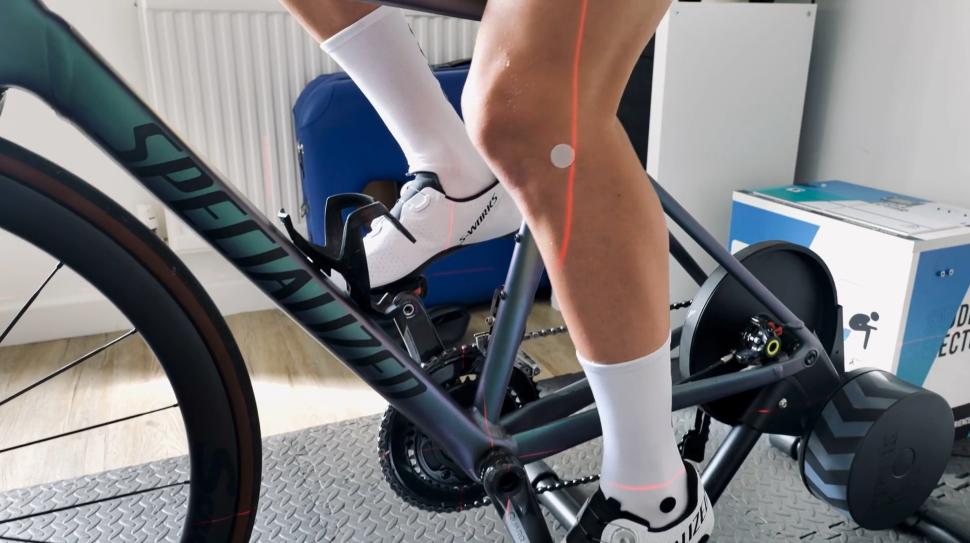
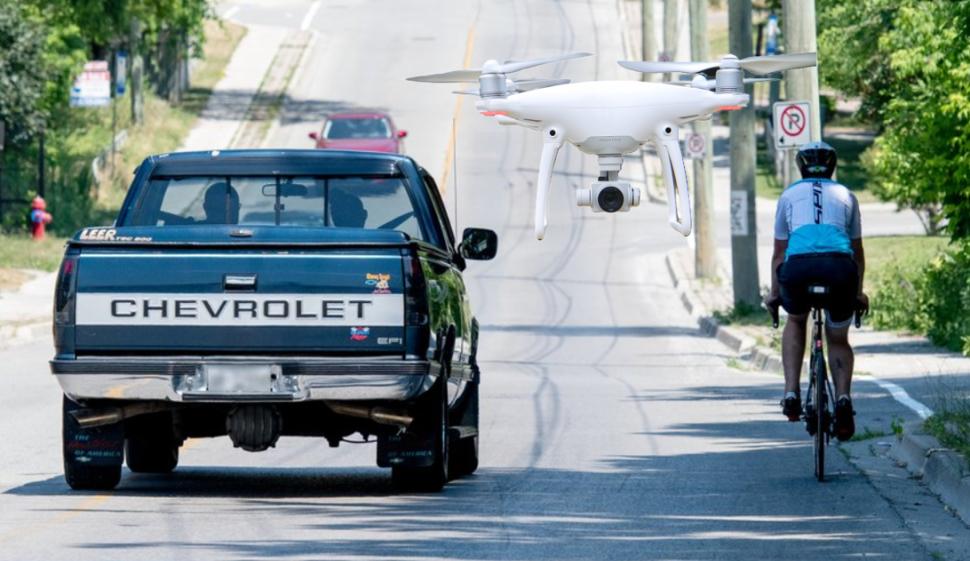
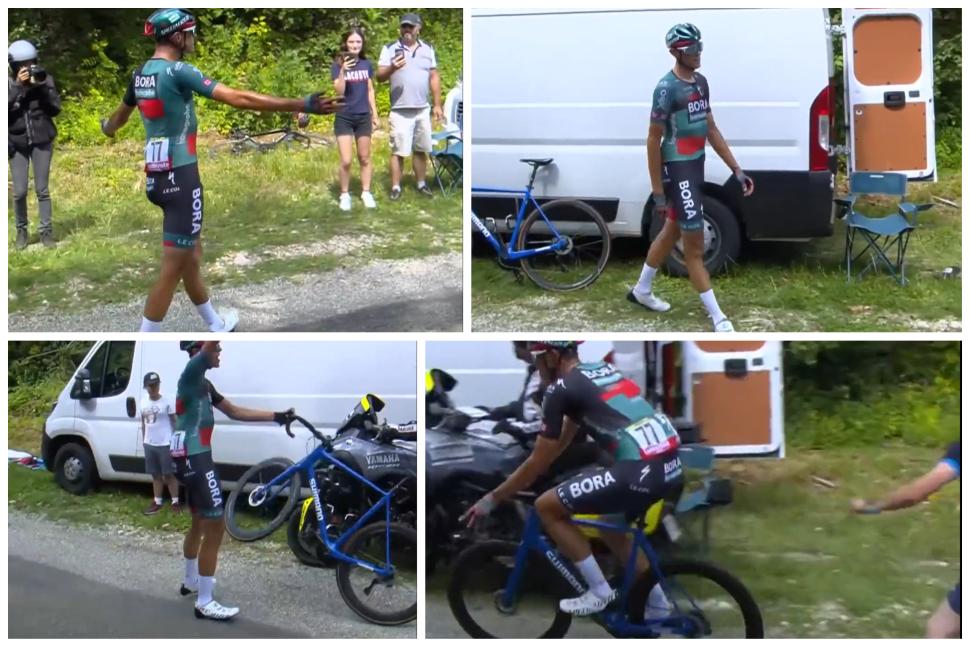


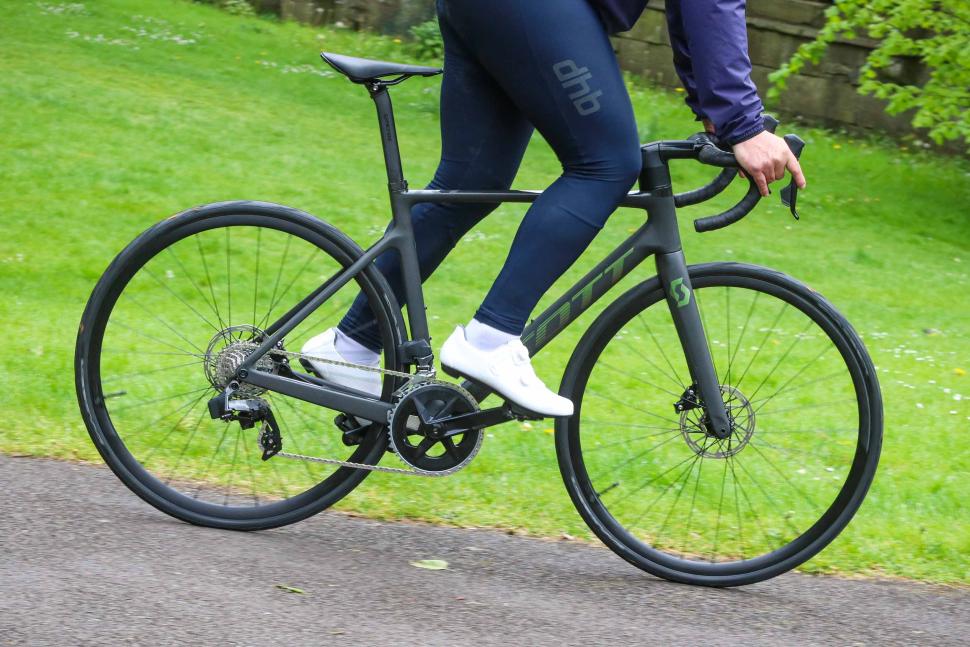

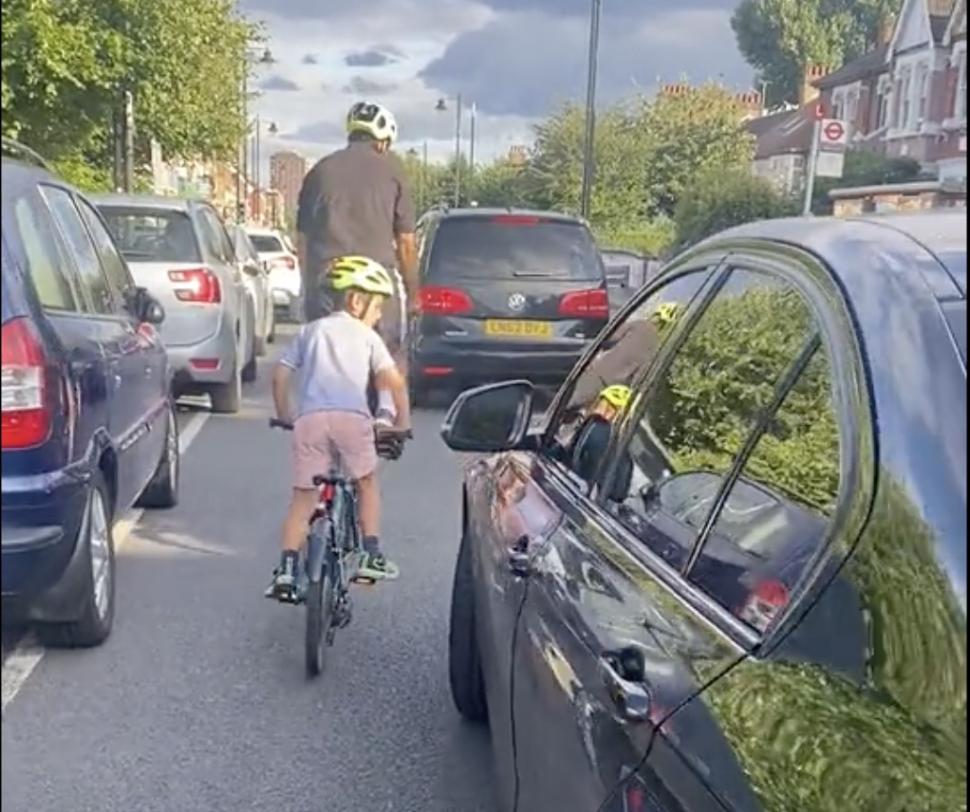
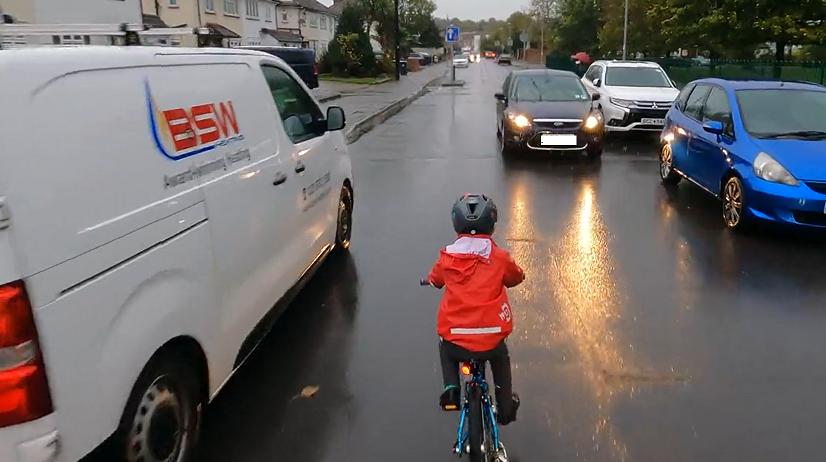

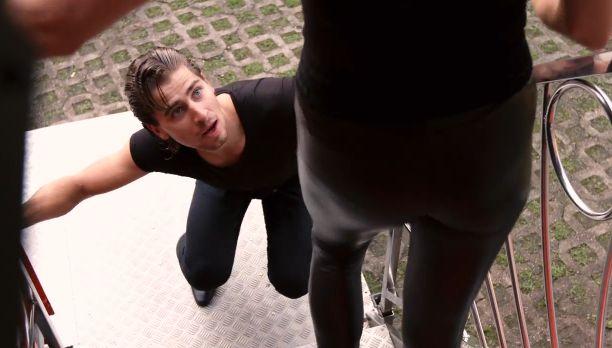

Add new comment
30 comments
Nice crunch from Politt's gears.
I must say that I like the cut of Robert's jib and hope he gets his bike back.
Totally agree looks a very cool dude !
https://www.bristol247.com/news-and-features/news/fiasco-festival-way-cl...
and
"Ban fossil fuel ads to save climate, says UN chief"
Does this mean British Cycling has to drop Shell?
https://www.bbc.co.uk/news/articles/cv22vl99vwro
there is no has to because the UN is suggesting banning advertising it hasn't yet been banned (nor is it likely to).
Personally I can't see how banning fossil fuel ads achieves anything. People Aren't weighing up travelling by train or travelling by car before being swayed by a shell advert and choosing to drive.
People are using fossil fuels for their convenience, so advertising is about increasing market share. I don't believe the advertising creates any desire to use more petrol or deisel in a way that is comparable to advertising alcohol or smoking.
The most pressing concern with fossil fuels is to stop all new licences for new wells and mines, let the price rise due to supply/demand and leave market forces to drive the move away from carbon fuels as they become more expensive than renewables and are left only for those uses which cannot be decarbonised.
"Man (on electric motobrike) admits snatching 24 phones in an hour...
Stringer also admitted dangerous driving and driving without insurance."
Will be interesting to see what sentence it gets.
https://www.bbc.co.uk/news/articles/cd116nk2p30o
https://metro.co.uk/2024/06/05/car-crashes-group-12-children-leaving-sev...
Interesting to read the (as usual, badly written) headline state "car crashes into" only to be followed by "a motorist smashed into"...
The Sagan advert is actually for Zlaty Bazant 0.0% Radler ("cycling beer", basically a wheat beer shandy that's supposedly an isotonic), so pretty appropriate actually.
More collective responsibility
https://www.onlondon.co.uk/dave-hill-londons-cyclists-must-improve-their...
" Go to Copenhagen, so often cited as an example London ought to follow, and be astonished by the civility of cyclists there compared to the casual rule-breaking and extreme sport mentality prevalent here. "
Anyone been to Copenhagen and able to comment ?
Thanks for that link.
A very amusing read.
I have. It's notable that red lights are held in much greater regard over there (including amongst pedestrians) which may have something to do with their two-phase left turns and the sheer amount of traffic using the separated infrastructure (not as much opportunity to misbehave if you're travelling in a large group of cyclists). I did notice quite a number of cyclists/scooterists using their mobile phones whilst travelling which I believe is illegal over there, so I don't think they're necessarily any more well behaved than people over here.
Must pay it a visit.
This chimes with my (brief, now old) observations in e.g. NL. Actually while some rules seem more scrupulously observed if you look there's plenty of lawbreaking, not just of the "technical" kind.
Yes, people do differ a bit in their general attitude to compliance with authority. But they definitely vary around specific rules. (And not just in places where the policing's such that if you do it, you'd be very lucky to be able to do it again...)
I think the UK's unexamined ideal of Good Cyclists (if they exist) confuses things. We've probably all internalised it. So Good Cyclists are like cycle-monks - they scrupulously keep all the "rules", written and customary, and are highly skilled riders who are somehow far more considerate than the mass of the walking, driving public. (We all know what Bad Cyclists are...)
Noting that in the UK even in places where there is a "lot of cycling" (a few places in London) I'm not sure it's full "mass cycling" yet (though it's encouraging). So there's still probably a skew away from the normal spread of the population (in terms of age, socioeconomic categories etc.) That also goes for the one place where there may be sufficient cyclists to count - Cambridge.
The infrastructure is also designed for cyclists, so probably much less 'need' to break the rules to make steady progress?
In UK many/most signal controlled junctions don't sense cycles, so what is one to do if there are no motor vehicles? Also no green waves etc etc.
Also, if there was no separated infrastructure in NL DK cities, motor traffic would be swamped & grind to a halt.
"The London cycling demographic contains heavy over-representation of white males from higher-income households."
Couldn't the same be said for cars ?
This fact is in itself revealing of the discriminating nature of motor dominated road traffic, it largely excludes all sorts of "weaker" demographics, children, the elderly, women... Not that the author of that piece would recognise that, given that his aim, after a few paragraphs where he pretends to be really interested in cycling, is to disparage cyclists.
I feel this is an oxymoron
Everyone knows that there is no such thing as a tailwind, only a headwind
Is it possible, in densely-built cities, to make full-separation cycling facilities? Part of the reason that murder strips exist is that it isn't - not to mention hugely expensive in the short stretches where it is.
Why is separation of cyclists from other road users seen as desirable? Because many of the other road users are intrinsically lethal, due to both the nature of their transport machines and the nature of themselves when using them (and sometiomes when not using them but just walking about).
It isn't ever going to be a practical solution to build fully separate cycling (or walking) infrastructure for every possible journey. The cost would be gigantic; the need to make vast amounts of compulsary purchases to tarmac or pave a complete inhibitor of the very idea.
What to do, then?
There are two basic solutions: ban the vulnerable from existing urban roadways (a la motorways) or ban the dangerous machines and drivers who make others vulnerable.
I'm for the latter. Motorised vehicles of vast weight and speed driven by any old human are not just killing and maiming millions worldwide per year but poisoning everywhere they go. They're a major deleterious factor in a large range of current damages and ills around the planet.
Most will poh-pooh the idea that cars et al can be done away with. That's just their lack of imagination, really.
It's probably going to happen fairly soon all by itself. The problem is that cyclists, pedestrians, most humans and most other living organisms are likely to be done away with too. One major do-away-with-'em factor will be motorised transport - until it all disappears up its own fundamental orifice.
Yes it most certainly is possible. Where the roads are narrow, it's a simple case of making them one-way for motorised traffic.
I would argue that it's far more expensive to not have separated cycling facilities as that impacts the health of the population (more sedentary and effects of tyre/exhaust pollution).
Netherlands spends €500 million a year on cycling infrastructure and gets €18 billion of benefit in return in terms of reduced cost to their health service, reductions in workplace lateness and absenteeism and so on. €36 back for every €1 spent and yet we are told that it's not practical/cost-effective to do the same in the UK.
It is a little known fact that the Dutch pioneered genetic engineering. Back in the 80s they had genetically engineered a strain of grain that ended up making musical tones when the wind blew across it. They trademarked it as Holland Oats.
The United Nations refused to recognize the trade mark, saying "I can't go for that, no can do."
Say It Isn't So? Could that not be Just Your Imagination? Ah well, Who Said the World Was Fair?
In Richmond Park in South West London parts of the park are closed to unauthorised vehicles with more parts closed at weekends. In the closed sections authorised vehicles are expected to drive at 10mph with hazard warning lights flashing*.
Similar restrictions could/should be applied to roads where the roads are too narrow for a car to pass a cyclist either because of adjacent buildings or parked cars.
Ultimately cars are going to have to have power-to-weight ratio limits (as was done for motorcyclists decades ago) and location-based speed restrictions that also activate warning lights and other safety devices.
Given how difficult it is to get drivers to obey 20mph (and any other) speed restrictions I don't see this happening for a very long time, but how else to curb the enormous number of road casualties every year?
* few obey this regulation however
I agree most of the permitted vehicles don't follow this rule (parents of children at the Royal Ballet School in their SUVs are particularly bad) but I was riding there on Sunday and coming down Sawyers Hill towards Roehampton Gate there was a car following the rules to the letter, 10 mph and hazards on, and the behaviour of certain cyclists around it was ridiculous. They were approaching from behind at speeds in excess of 30 mph and skimming the car so close that I was worried that the slightest flinch from the driver would cause a potentially fatal accident. A couple of the people doing this were making "wanker" signs to the driver as they passed. They were doing all this into the face of heavy oncoming cyclist traffic going up the hill, with a number of those riders having to swerve out of the way for the big brave men (yes, they were all men) to come through. It was really disappointing to see a small minority behaving so dangerously and inconsiderately towards someone who was actually sticking to the rules that have been implemented to protect cyclists.
https://youtu.be/nNkwVr1Kwws
From: https://bicycledutch.wordpress.com/2018/10/09/cycling-in-the-hague/
Highest population density city in NL = The Hague (true in 2019 and AFAIK still the case)
Apparently quite a bit less cycling than e.g. Amsterdam - it's on the low side for NL. The difference seems to be filled by greater public transport usage. Apparently they're making efforts to improve matters.
We only need physical barriers because so many terrible, aggressive dangerous drivers are allowed to be on the road.
Lets improve cycling infrastructure AND remove as many dangerous drivers as possible from the road through serious punishment for dangerous driving and regular retesting of all drivers. This would improve safety for pedestrians, cyclists and drivers, not just for cyclists.
How do you remove those dangerous drivers from the road?
Hand over the first step of dash cam reporting not to the police but to the DVLA, they could then remove the license from any driver who did something which would have been grounds for failing a driving test and forward anything which falls into the insanely high bar of the careless and dangerous driving laws to the police for proscecution. This would make queues for driving tests longer but that is literally the deterrant needed to stop people doing stupid shit to save a few seconds. "I could pull out in front of this cyclist but if they have a camera I can't drive for 5 months while I wait for a test slot." would be enough to stop most of the stuff that puts our lives at risk every day. The malicious violent drivers and the people who drive without a license wouldn't be stopped...but they are already not being stopped so the situation isn't worse.
Collars for motorists if they get too close or use the cycle lane.
"The collars play a tune to redirect the cattle when they come close to a boundary, and then give them a gentle shock if they do not divert."
https://www.bbc.co.uk/news/videos/crggxxk28g6o